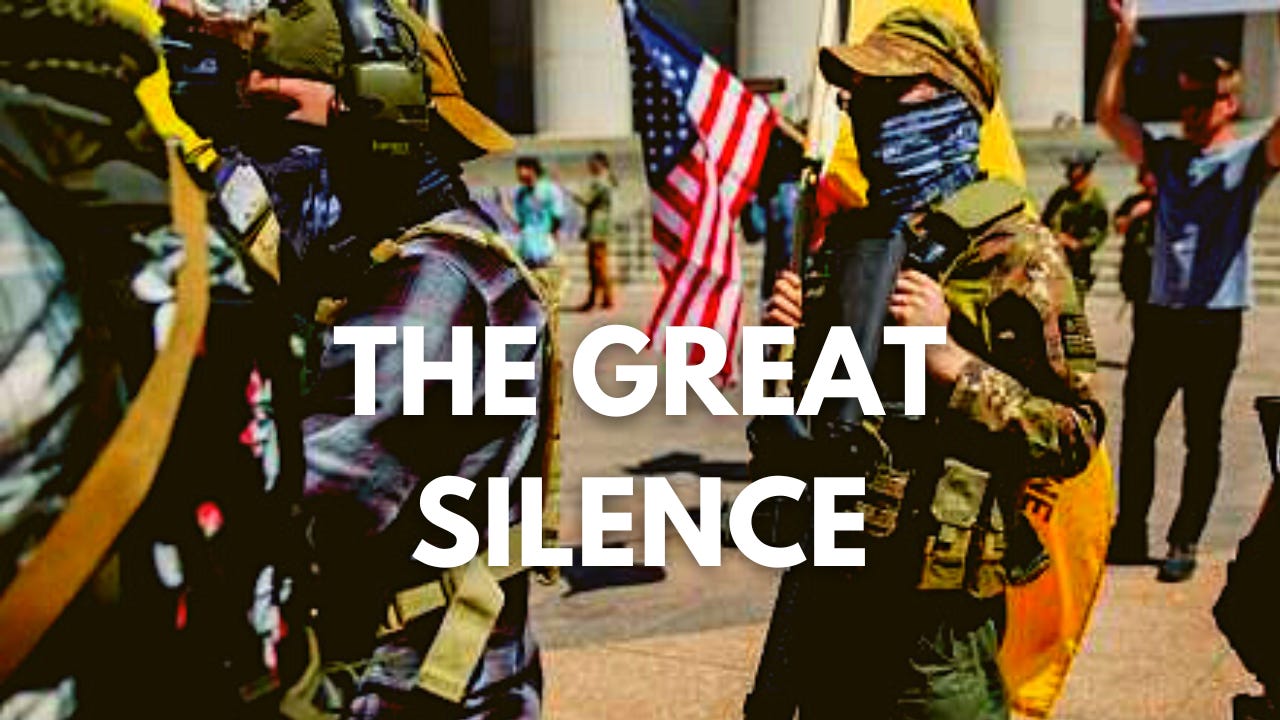THE GREAT SILENCE
Militias and paramilitary groups are indicators of institutional decay. Their present level of activity is cause for great, great concern.
Tonight (December 4th) at 8pm eastern I’ll be hosting another installment of my BOURBON TALK POLITICAL Q&A LIVESTREAM, where I bust open a bottle of bourbon and take your questions. We’ve got a lot to talk about and I’m feeling more focused, determined, and hopeful than ever. Please, plan on tuning in. I’ll post links on my Twitter later today where you can ask questions, or you can reply here.
Having covered politics now for years, I’ve learned to pay more attention to the conversations than the coverage. The latter is important. As I’ve discussed before, stories in newspapers and on the networks reveal what the wealth class are discussing and find important. There are signals being sent. Ideas hatching and developing. It is a (sometimes) free entry point into understanding exactly where things are going and where the decision-makers are spending their time, energy, and focus.
But the difference in media attention and what normal, everyday people are discussing is vast. And telling.
Lately, as I’ve been traveling and having discussions, what I keep hearing from people on the ground is complicated. There is a feeling of dueling states. A feeling of hope. A feeling that things might possibly change for the better. But also a recognition that some things, including radicalization and the Right Wing, are growing worse by the day. Just yesterday I talked to a handful of people who had watched their sons, brothers, and friends fall into ugly groups and patterns. Their mental health had declined along with their conditions and, over time, posting about Donald Trump online or the Big Lie or eventually QAnon had graduated to throwing in their hats and AR-15s with local militias. Their conversations were soon dotted with rage and antidemocratic rhetoric. And then, it felt like they were lost for good.




